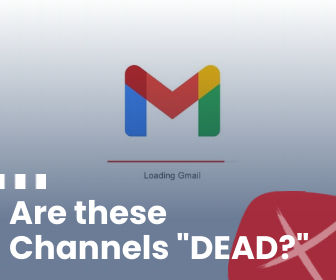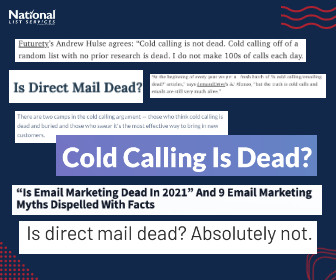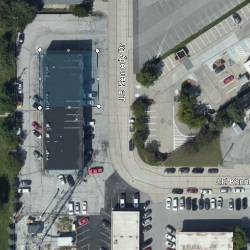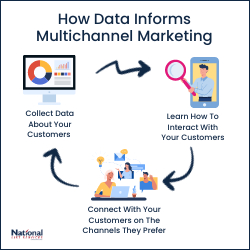Are these Channels “DEAD?”

It seems like soooooo many articles/emails/ebooks/Facebook videos are titled something along the lines of: “blank” is dead. Or “Why the new ios update is going to kill email marketing.” Or “3 stats that prove print and mail is dead.” But it is? For the most part those titles are just clickbait, and the content just proves how it is very much not dead.
So, let’s take the three most common “dead” or “dying” marketing channels and see how effective they really are.
Email Marketing
I probably get an email once a week proclaiming the end of email marketing. How can email marketing be “dead?” Statista estimates that close to 320 BILLON emails will be sent every day in 2021. On average, office workers receive 127 every day. And a Forbes article from last year suggested that “every person needs at least four email accounts” for security reasons. However, quantity of emails is one reason some say that email marketing is losing its effectiveness as a marketing channel. Is that true?
Email is often one of the main touch points a brand has with a consumer and many younger consumers prefer to communicate with brands with email. Even email that’s clearly from a mailing list still feels like a direct conversation. Which contributes to email’s engagement rates. Across industry’s email average click-through-rate is 3.71 and the average open rate is 22.9. Although that may not seem like a lot, Facebook, Instagram, and twitters combined average engagement is only 0.58.
Part of the reason email gets better engagement rates is because with email, the message is directly reaching who it’s intended for.
Print and Mail
The death of print and mail has been predicted since the beginning of email. Probably even before then. One of the very first articles in our Weekly Vibe newsletter was called “Print’s Not Dead, Right?” It wasn’t in March 2020, and it defiantly isn’t now.
Direct mail average open rate is somewhere between 68 and 90%, which is double, triple, or quadruple the average open rates of other marketing channels. Do people who open direct mail actually purchase? Yes! On average people who receive direct mail purchase 28% more items and spend 28% more money!

Why is direct mail so effective? It comes down to fact that we (humans) like getting mail. 41% of Americans of all ages look forward to getting their mail every day. We still want very real things in our hands, which is something totally lost in email inboxes or on social media. That tactile connection translates into 💰.
Cold Calling
Cold calling is another one of those things that’s been “on its way out” for years! Why is sticking around? At this point, an actual person to person conversation is a novelty and stands out against digital interactions. And sales, more than anything, based on connections and communications. It’s a lot easier to ignore an email than a ringing phone. It can also be harder to say no to a real person who you can actually hear.
If you add cold calling as part of your omnichannel marketing, work on your pitch, and be prepared to fail, you may be surprised at how effective it is!
What is your favorite marketing channel or tactic that’s been “dead” for years?
Can you use Geo-Fencing?
We often focus on how to optimize your website and other online presences. There are also many real-world ways to generate online traffic, such as geofencing. What is geofencing? And how can you use it grow your business?

Simply put, geofencing is virtual fence around a location. You can draw out this fence around any area that you think has potential customers. For example, you can geofence your brick and mortar store. You could also put a geofence around your direct competitor’s locations.

What happens after someone enters your fence? You can target that device with an ad, relevant deal, or offer. You can use geofencing to pull people into a location they are already close to. This works great for personal and localized content.
Geofencing is also great for retargeting. We are used to retargeting people who visiting our websites so it makes sense that we would also retarget people who visited us in person. This can increase returning customers and brand awareness.
Does geofencing work? YES! According to a survey done by OuterBox Design, more than 80% of surveyed shoppers said that they used their phones while in physical stores to look for products or to compare prices. That’s a lot of possible people to target! Also, campaigns that incorporate geofencing often show much higher click through rates and engagements.
What locations would you like to geofence?
How Can Data Help Multichannel Marketing?

Quality data and the proper interpretation is the foundation for any campaign. Especially for campaigns using more than one more channel or multichannel marketing. Customers now want personalized messages and interaction in the channel of their choice. The only way to do that successfully is have ongoing campaigns, spread out of many channels. How can data help?

Step one for any campaign is to know your customer. Dig through all your first party customer data to create personas of your target customers. Knowing about your customers will help you figure out what channel they will mostly like to engage through.
It is helpful to give your customers and potentials multiple touch point options. Encourage your customer to sign up for emails, interact on social media, and any other engagement options. The more data you have on your customers, such as email, phone, social accounts, and their address the easier it will be to engage in a way that reaches them.
Next, you can collect data and analytics about your customers from the channels you are using to constantly to learn more about your demographics and your customer’s buying habits. The more channels you use the easier it will be to learn about your customer.
Knowing what channels your customers prefer can save you money. For example, there’s no point in sending your target audience direct mail if you know that’s not a channel that works for them. Therefore, collecting data about your customers can help you lower your CPA and give your faster ROIs.
How are you using data to inform your multichannel campaigns?
Want to learn more about how customer data can help your business grow?
What is it about digital marketing that chaps our hide?

My colleagues and I are in the marketing business, so when we are browsing the web, we understand the marketing and advertising we encounter. We know how it was created, and how it gets delivered to us on our screens and in our searches. But, at the end of the day—well all day actually—we are consumers just like you, and sometimes the pervasiveness and invasiveness of these ads are at a minimum annoying, and sometimes a bit anger-inducing.
So much so, that some of us do everything we can to block them by installing ad-blocker extensions to our browsers, and turning on every privacy and security options we have on our phones. Sometimes, we just defiantly refuse to even glance at them.
Although embracing these anti-ad measures offer us brief reprieve, doing so hides us from the goods and services that we need or want to know about. We essentially disconnect ourselves from the businesses and providers that we have good relationships with. Let’s simply define the issue as a communication strain between provider and consumer—a continual and dynamic struggle for comfortable digital conversation.
There are as many solutions to the struggle as there are providers and consumers. We all have a threshold of comfort that is unique to us as individuals.
Tell us what chaps your hide! We’ll continue to find zones of comfortable digital conversation so providers and consumers can stay connected.
